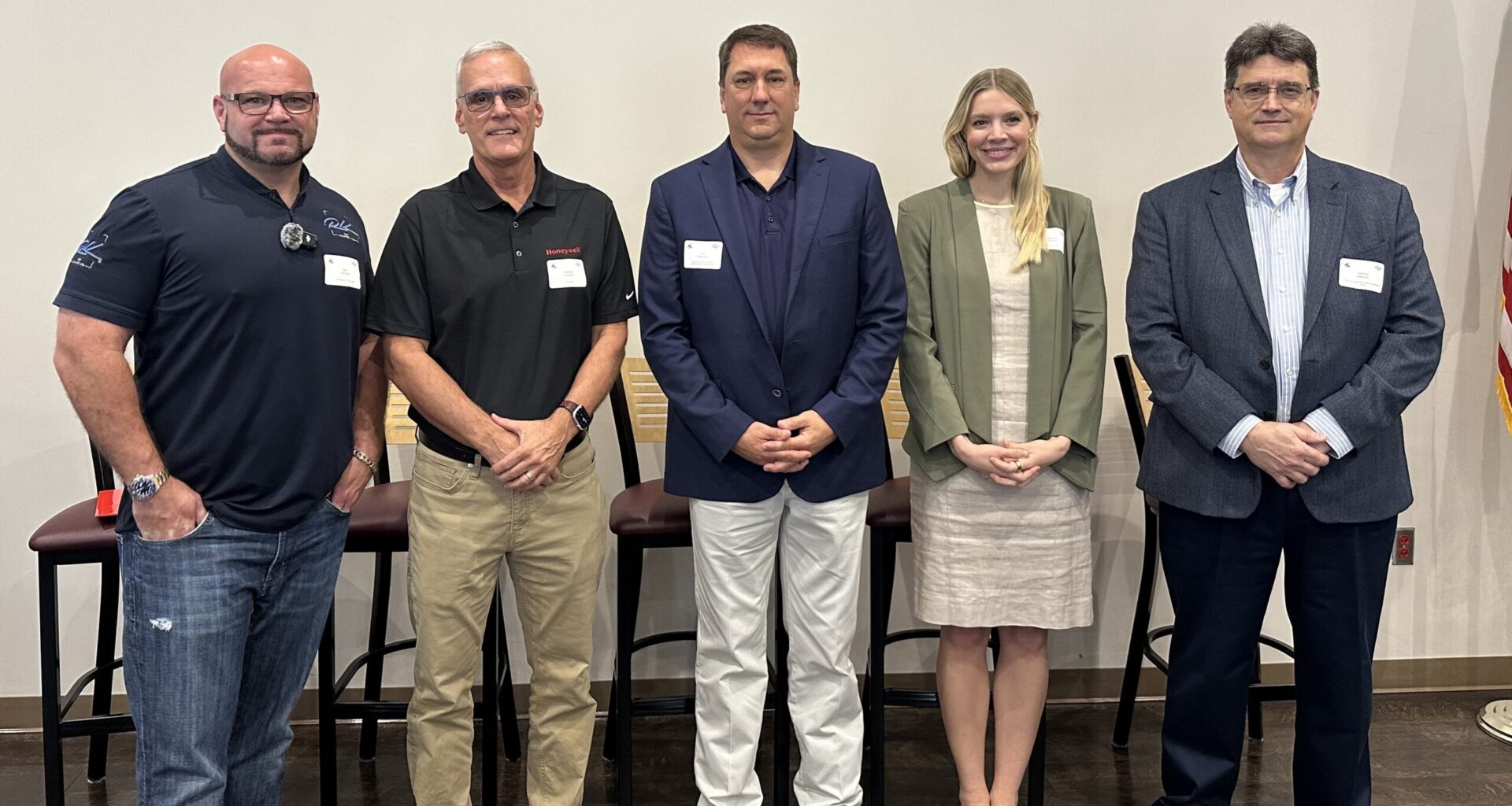A panel discussion with manufacturing industry experts was held Friday at the St. Petersburg College’s Midtown Center.
Entitled the “Industry 4.0 Symposium,” the event was focused on the ongoing industrial revolution, which has helped manufacturing processes adapt to digital technological advancements.
Topics discussed at the panel included innovative technologies such as artificial intelligence, the Internet of Things and 3D printing as well as the future of the workforce.
The panel consisted of Charlotte (Ward) Brodey (Guidewheel head of customer success), George Barnych (National Center for Defense Manufacturing and Machining vice president and chief technology officer), Joe Veranese (National Center for Defense Manufacturing and Machining vice president and chief information officer), Roy Kirchner (Ultimate 3D Printing Store CEO) and Wendell Krahmer (Honeywell senior operations manager).
Brodey began the conversation by explaining the concept of the Internet of Things and how this plays a role in the manufacturing process. The technology refers to physical objects, such as computers and smartphones, that have the ability to share data with other devices.
“I describe it typically as connecting the physical world to the digital world,” she said. To exemplify, Brodey discussed how Guidewheel places sensors on older factory machines to monitor their efficiency and output.
This, she explained, can help create accurate data to make decisions.
Barnych spoke about how AI is incorporating large language models, or systems that can understand and summarize text data. With software such as ChatGPT, Barnych believes AI is receiving “a lot of hype.”
However, it will take time to figure out the technology’s role in the manufacturing industry, he said. “What happens is that products tend to outpace the real capabilities.”
Industry leaders and employees need to determine when and how to implement AI, Barnych explained. “It’s going to affect everybody and it’s going to make a big push. I see a big positive because now everyone is going to know what it is.”
Krahmer agreed with Barnych about AI’s potential in the industry and believes the technology could be useful for predictive analysis.
3D printing, or the process of manufacturing objects from a digital model, is another tool that can enhance and modernize the industry, Kirchner believes.
The technology can simplify the manufacturing process as well as save professionals time and money. This has made 3D printing rise in popularity in recent years, Kirchner said.
“Now, a lot more people can get involved in it and there’s tremendously more information on the internet on how to use it.”
Krahmer reminded the audience that transforming an industry is a “slow” process. The implementation of new technologies “doesn’t happen overnight.”
More importantly, it’s critical to train and educate team members throughout the process. “You have to build a culture,” he said. “I believe you need life-long learning.
“Fifty percent of the skills that our factory workers need are going to change in the next two years,” Krahmer continued. “We’re getting to that point with this conversion that if they can’t learn and adapt, unfortunately it’s going to be tough in manufacturing.”
The panelists agreed that industry education is important for students. Encouraging young people to explore their talents can help prepare them for the workforce.
Internships and university projects in collaboration with manufacturing companies can teach students more about the real world, Barnych added. This is equally beneficial for the companies as they can pursue top candidates.
Veranese believes high schools and colleges should interact more with manufacturing professionals. “You have to engage with industry by talking to industry – understanding what our needs are. Our needs don’t always align with what’s taught.”
The event was a collaboration between the Bay Area Manufacturers Association and St. Petersburg College.

